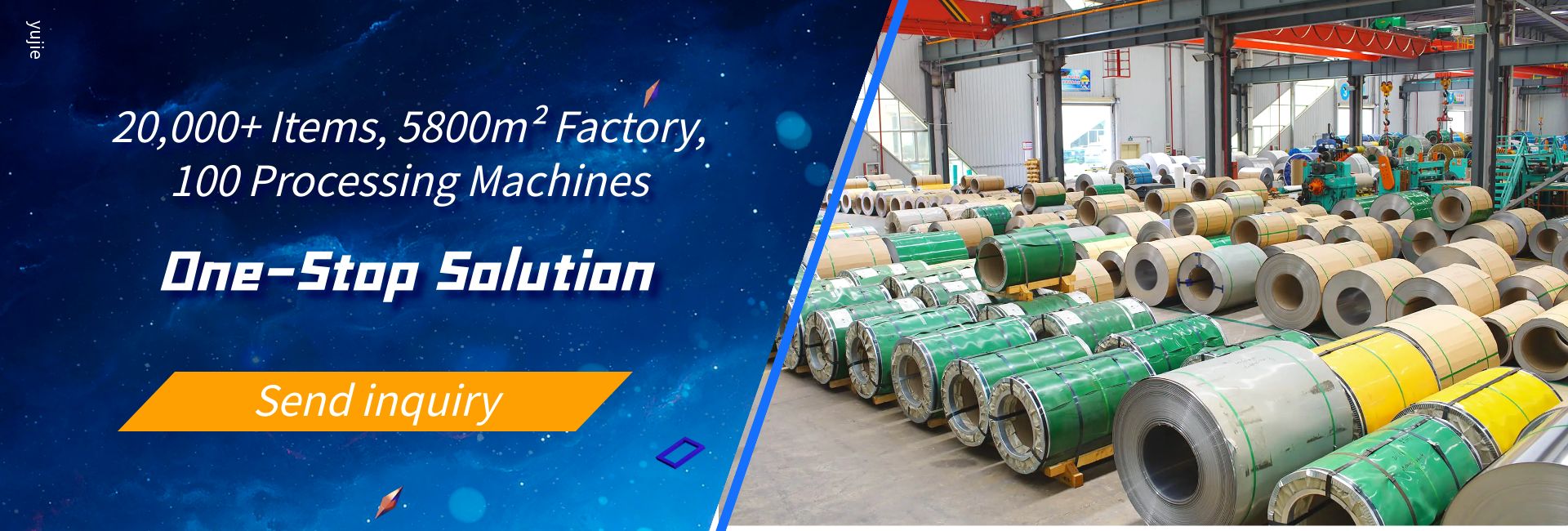Popular classification of stainless steel and several aspects that should be paid attention to in processing
Stainless steel can be classified into the following categories: 201, 202, 301, 304, 316, 309, 321, etc. are austenitic stainless steels, which are non-magnetic; 409, 430, 410, etc. are martensitic stainless steels, commonly known as stainless iron, which are magnetic;
Among them, 304 stainless steel is the most widely used, and is used in food equipment, general equipment, atomic energy industry equipment, etc. 304C≤0.08Ni8.00~10.00Cr18.00~20.00,Mn<=2.0Si<=1.0S<=0.030P<=0.035304LC≤0.03Other elements are the same as 304201C≤0.15Ni3.5--4.50Cr16.00~18.00,Mn<=5.5--7.50Si<=1.0S<=0.030P<=0.035202C≤0.15Ni4.0--6.0Cr17.00~19.00,Mn<=7.5--10.0S i<=1.0S<=0.030P<=0.035310S: 2520 is the general term for the national standard 0Cr25Ni20 and 2Cr25Ni20. 0Cr25Ni20 is 310S for the American standard, C≤0.08Ni19.00~22.00Cr24.00~26.00, Mo2.00---3.00Mn<=2.0Si<=1.0S<=0.030P<=0.035. 316 is the brand under the American standard. It is stainless, heat-resistant and corrosion-resistant steel. It is an austenitic stainless steel. The national standard is 0Cr17Ni12Mo2. It is a stainless steel that is better than 304 and is corrosion-resistant in seawater and other media. Stainless steel (i.e. alloy steel with nickel content > 8% or chromium content > 12%) is currently widely used in the fields of petroleum, chemical industry, aviation, aerospace, food and metallurgy. Therefore, it is of great practical significance to explore the cutting of stainless steel. Stainless steel is a difficult-to-cut material due to its poor cutting performance. According to the actual characteristics of stainless steel cutting, the reasonable selection of tool cutting parameters in stainless steel cutting is discussed from the three aspects of tool itself, tool geometry and cutting amount.
Keywords: stainless steel cutting; cutting parameters; reasonable selection
1 Actual characteristics of stainless steel cutting
1.1 It has a strong tendency to work hardening and is easy to wear the tool
Most stainless steel materials (except martensitic stainless steel) have a strong tendency to work hardening. At the same time, because the work hardening layer has a very high hardness (usually about 2 times higher than the original hardness, the surface hardness HV can reach 400-570kg/mm2). Different cutting conditions and stainless steel workpiece materials will make the depth of the hardened layer from tens of μm to hundreds of μm (usually 100μm-200μm).
1.2 Chips are not easy to break or curl
Chip is not easy to curl and break during cutting. Especially in the cutting process of boring, drilling, cutting and other processes, chip removal is difficult and chips are easy to scratch the processed surface. When cutting stainless steel on CNC machine tools, chip breaking and chip removal are key issues to consider.
1.3 Chips have strong adhesion and are very easy to cause tool nodules
Stainless steel materials have high toughness, especially strong affinity for other metal materials, and it is very easy to cause tool nodules during processing.
1.4 "Three highs" (high temperature, high hardness, high strength) are not easy to separate chips
One of the characteristics of stainless steel is high temperature, high hardness and high strength. For example, the mechanical properties of austenitic stainless steel maintained at 700°C will not be significantly reduced.
2 Reasonable selection of processing tools Reasonable selection of processing tools is an important prerequisite for stainless steel processing. Stainless steel processing tools must have the following characteristics: high strength, hardness, toughness, wear resistance and low stainless steel affinity. Commonly used tool materials are cemented carbide and high-speed steel. Tools with complex shapes are mainly made of high-speed steel. Since the cutting speed of high-speed steel when cutting stainless steel cannot be too high, it affects the improvement of production efficiency. For simpler tools such as turning tools, the tool material should be cemented carbide with high strength and good thermal conductivity, because its hardness, wear resistance and other properties are better than high-speed steel. Commonly used cemented carbide materials are: tungsten cobalt (YG3, YG6, YG8, YG3X, YG6X), tungsten cobalt titanium (YT30, YT15, YT14, YT5), general type (YW1, YW2). YG cemented carbide has good toughness and thermal conductivity, and is not easy to stick to chips, so it is suitable for rough turning of stainless steel; while YW cemented carbide has good hardness, wear resistance, heat resistance, oxidation resistance and toughness, and is suitable for fine turning of stainless steel. When processing 1Cr18Ni9Ti austenitic stainless steel, YT cemented carbide should not be used. Since the Ti in stainless steel and the Ti in YT cemented carbide have affinity, the chips can easily take away the Ti in the alloy, which will increase the wear of the tool.
3 Reasonable selection of tool geometry angle
It is very important to reasonably select the tool geometry angle. The geometry angle of the cutting part directly affects the cutting force, surface roughness, work hardening trend, productivity, tool durability and many other aspects of stainless steel workpieces during cutting. Reasonable selection of tool geometry angle can not only improve the processing quality and processing efficiency of the workpiece, but also significantly reduce the processing cost (such as reducing the frequency of tool replacement and scrap rate, etc.).
3.1 Reasonable selection of rake angle
When cutting stainless steel, the rake angle should be appropriately increased without reducing the strength of the tool. The proper increase of the tool rake angle will reduce the plastic deformation ability, cutting heat and cutting force of the tool, and the tendency of work hardening will also be reduced. Correspondingly, the tool durability will be significantly improved. In general, the tool rake angle is usually kept at 12°-20° for the best, and the specific angle is adjusted according to actual needs.
3.2 Reasonable selection of back angle
Stainless steel, which is higher in elasticity and plasticity than conventional carbon steel, will increase the contact area between the back angle of the turning tool and the cutting surface when cutting if the tool back angle is too small. At this time, the friction high temperature zone is concentrated at the back angle of the turning tool, the wear of the tool will be significantly accelerated, and the surface finish of the workpiece will be significantly reduced. Therefore, when cutting stainless steel workpieces, the back angle of the turning tool should be larger than the angle when turning ordinary carbon steel, but not too large, because too large a back angle will cause a sharp drop in blade strength and the durability of the tool cannot be guaranteed. Therefore, it is best to keep the tool back angle between 6°-10°.







Add:Dongbeitang Town, Wuxi,Jiangsu Province, China
Contact: zou
WhatsApp:+8613382242731
Copyright © Jiangsu Yujie Steel Group Co.,Ltd
powered by gongwong.com






